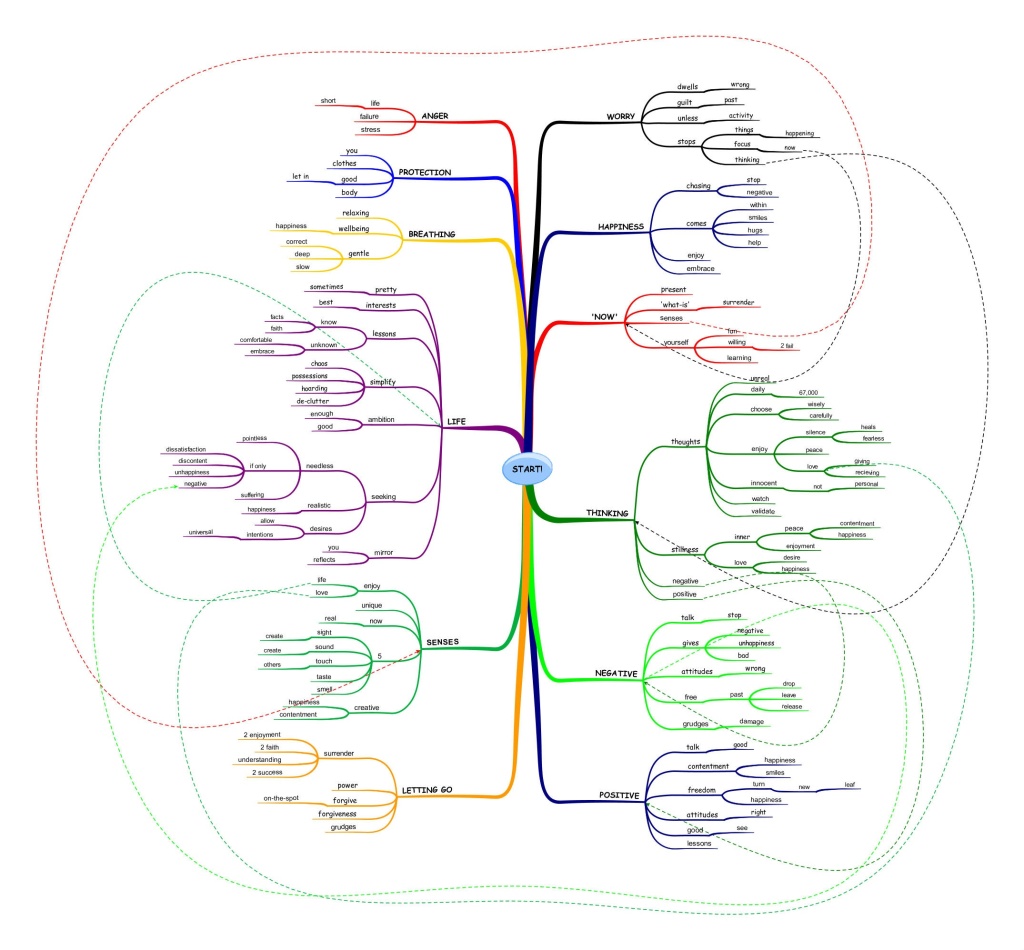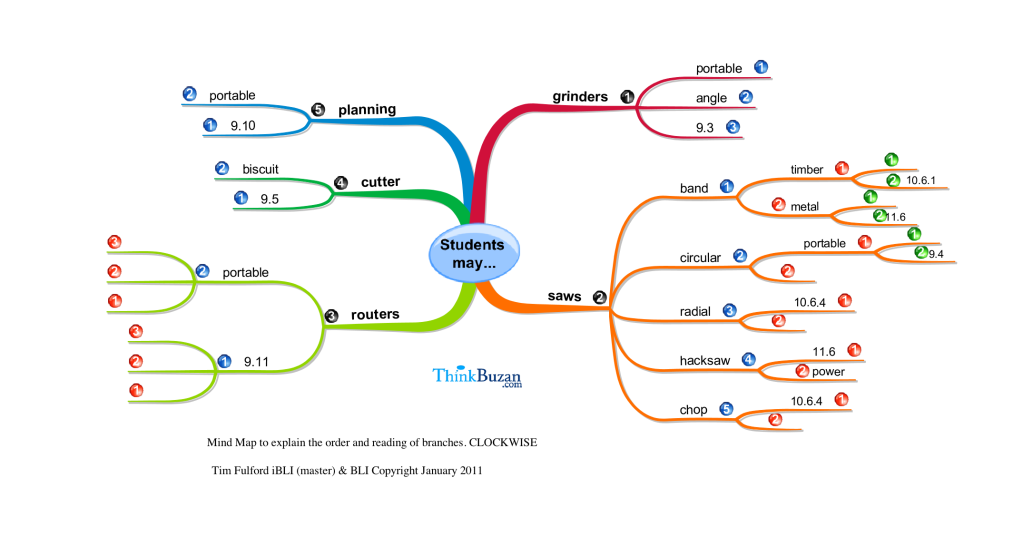This is from a post by Kathy Berman published on her excellent site. I would like to thank Kathy for inspiring me with this post and others on her site.
Everyone has creativity. To get in touch with new energy in you, try one of the following exercises.
Action board—use a large bulletin board to post 3×5 index cards for the 5 main categories of your life. You may wish to use general categories; such as goals, deadlines, dreams, etc. of be more specific, such as marketing, sales, etc. Using different colored 3×5 cards may help you to see the categories more easily. My suggestion is that you use a Mind Map which you leave displayed where you can easily see and add to it. See an example of a review Mind Map which I created with a friend who was going through a difficult time in their life. It enabled a clear path to be seen for the way ahead. Mind Maps give a very clear overview of what is going on and the connections between them. In this Mind Map you can clearly see that the aim was to be happy and creativity was what made the the happiness.
Every Sunday evening or another evening of your choice, review your boards and update them for the upcoming week/month/year depending on your system. This update will go quickly and will give you a clear, concise review of where you are and where you are going. This will lead to greater confidence. Remember if you fail to plan, you are planning to fail. Regular reviews are vital which is why having this in a visible location is an excellent idea.
Begin keeping a creative basket (a shoe box is another suitable container)—pretend you are 10 years old or ask a young friend and/or family member to help you. Take a large basket with a handle and put all the things in it you might enjoy using to create a new project. You may include sequins, glitter, paste, colored pens, watercolors, sketch pads. You may use these materials to play with often as way to express your creativity.
Love Jar—collect a glass or clear plastic jar. Using bright construction paper, cut into strips. On the strips of paper, write down short suggestions for yourself of ways you can feel greater love in your life. These activities will also add new confidence skills. For example:
- Clean out a cupboard or drawer today. Organise computer files and documents.
- Take a warm bubble bath.
- Explore a new lake or a nature retreat.
- Make a list of 15 of your strengths as a Mind Map and put it in your wallet
- Create a bulletin board of special cards others have sent to you or go to a card store and pick out 5-10 cards that you really love.
- Make a picture wall of your favorite picture.
- Make a recording of your favorite inspirational quotations.
- Trade skills with a friend to explore new ways of doing things.
- Choose a new hobby or improve on an older one.
- Have company for dinner and create an original menu.
- Cook or bake something today for someone else.
Begin keeping a loose-leaf notebook I call my “life-book”. The 5×8 size is convenient. I keep everything I might need to know in the immediate future. I also keep an index-sized Rolodex but the lifebook goes everywhere with me. It is a great companion when you’re remodeling or moving. You may have a companion on your computer. Keeping a collection of images also helps when you are feeling low and lacking in creative inspiration. Spread the images out and view each one fora few seconds then pick up one or two and look carefully for a longer periods of time.
Play is essential everyday for everyone. Plan to play everyday. The time you allot to play will repay you in increased productivity. Be sure to set time limits for play so that you don’t use play to prolong procrastination for some work you need to do. Make time to play and relax everyday!

Inspiration v1 Tim Fulford 2009







